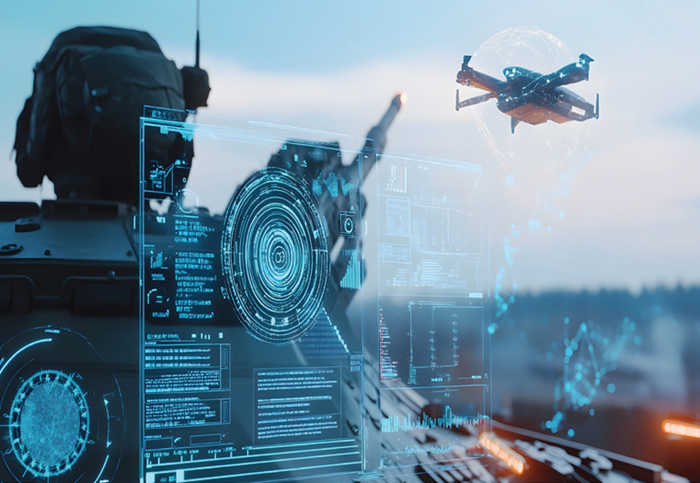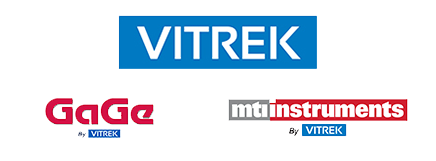Sponsored by Vitrek, LLCReviewed by Maria OsipovaSep 18 2025
Modern military testing and measuring demand precision, dependability, and interoperability with legacy and new equipment. Defense engineers have unique hurdles in avionics certification, explosive testing, and radar imaging, all of which require precise digitalization.
Outdated equipment frequently fails to meet extreme circumstances or interoperability requirements, jeopardizing mission readiness and safety. GaGe digitizers bridge the gap between the past and the future, providing high-resolution, high-speed data capture while effortlessly integrating into existing platforms.
Whether extending the life of legacy avionics test systems, capturing the violent transients of explosive events, or ensuring phase coherence in Synthetic Aperture Radar (SAR) applications, GaGe technology provides defense teams with the tools they need to maintain mission-critical accuracy and insight.
Legacy Test System Challenges: Preserving Mission-Critical Compatibility with Gage Programmable Digitizers
Challenge
A military customer used a legacy 1980s avionics test equipment to certify Line Replaceable Units (LRUs) for a jet platform.
A vital instrument—a 2-channel, 8-bit, 200 MS/s box digitizer—was old, required periodic calibration, and communicated via GPIB with out-of-date software. Replacing it was tough because the new unit had to perform exactly like the original to ensure system compatibility.
How the GaGe Digitizer was Used
Gage provided a modern 2-channel, 8-bit, 200 MS/s digitizer card built into a sturdy rackmount Windows PC with a GPIB interface. Engineers changed the digitizer's sample rates, input ranges, and starting behavior and created a LabVIEW shell to mimic the legacy unit's command protocol.
The replacement system runs headlessly, requires no routine calibration, and interfaces smoothly with the existing test software. Multiple units have been deployed to reliably test hundreds of LRUs and extend the life of the old test platform.

Image Credit: Vitrek, LLC
From Shockwaves to Insights: Digitizing Data in Military Explosive Testing Applications
Challenge
Explosion testing puts measurement systems to their limits. Pressure transducers and accelerometers must withstand millions of atmospheres and accelerations of thousands of g's, all within microseconds.
The generated signals include strong spikes and frequency ranging from sub-1 Hz shifts to oscillations above 1 MHz. The major issue is capturing these extremes without distortion while preserving the fine waveform features required for explosive dynamics analysis.
Conventional data acquisition frequently falls short. Low-resolution digitizers clip peaks and slow sample rates miss quick transients, resulting in lost safety performance and material behavior insights.
How GaGe Digitizers were Used
The GaGe Octopus CompuScope 8389 digitizer is designed to capture high-energy, short-duration events. Its 14-bit resolution preserves fine amplitude detail, and 125 MS/s simultaneous sampling across all channels provides precise monitoring of microsecond-scale transients.
Engineers can use adjustable input ranges to optimize dynamic range, minimizing saturation of large signals while catching minor changes. These capabilities accurately digitize complicated explosive waveforms, allowing for thorough event reconstruction, sensor validation, and improved safety and design decisions.

Image Credit: Vitrek, LLC
Synthetic Aperture Radar (SAR) Precision: Capturing I/Q Signals with the GaGe Sabre Digitizer
Challenge
Radar echoes must be captured precisely and phase-coherent to create clear, dependable images with Synthetic Aperture Radar (SAR). Signals in X-Band systems must be down-converted and digitized as I/Q pairs, ensuring precise timing across many channels.
Even minor jitter or phase misalignment can muddy images, impair moving-target detection, and jeopardize mission-critical intelligence.
How the GaGe Digitizer was Used
The Gage Sabre digitizer fulfills this difficulty with four synchronized input channels, 16-bit resolution, and sampling rates of up to 250 MS/s. Its architecture provides less than 5 ps of inter-channel jitter, providing coherent acquisition across receivers.
Timing stability is ensured by locking the digitizer and the down-converter to a GPS-disciplined 10 MHz reference. The Sabre's deep onboard memory and high-speed streaming-to-RAM facilitate extended SAR missions, allowing defense teams to confidently record, analyze, and act on radar intelligence.

Image Credit: Vitrek, LLC

This information has been sourced, reviewed and adapted from materials provided by Vitrek, LLC.
For more information on this source, please visit Vitrek, LLC.